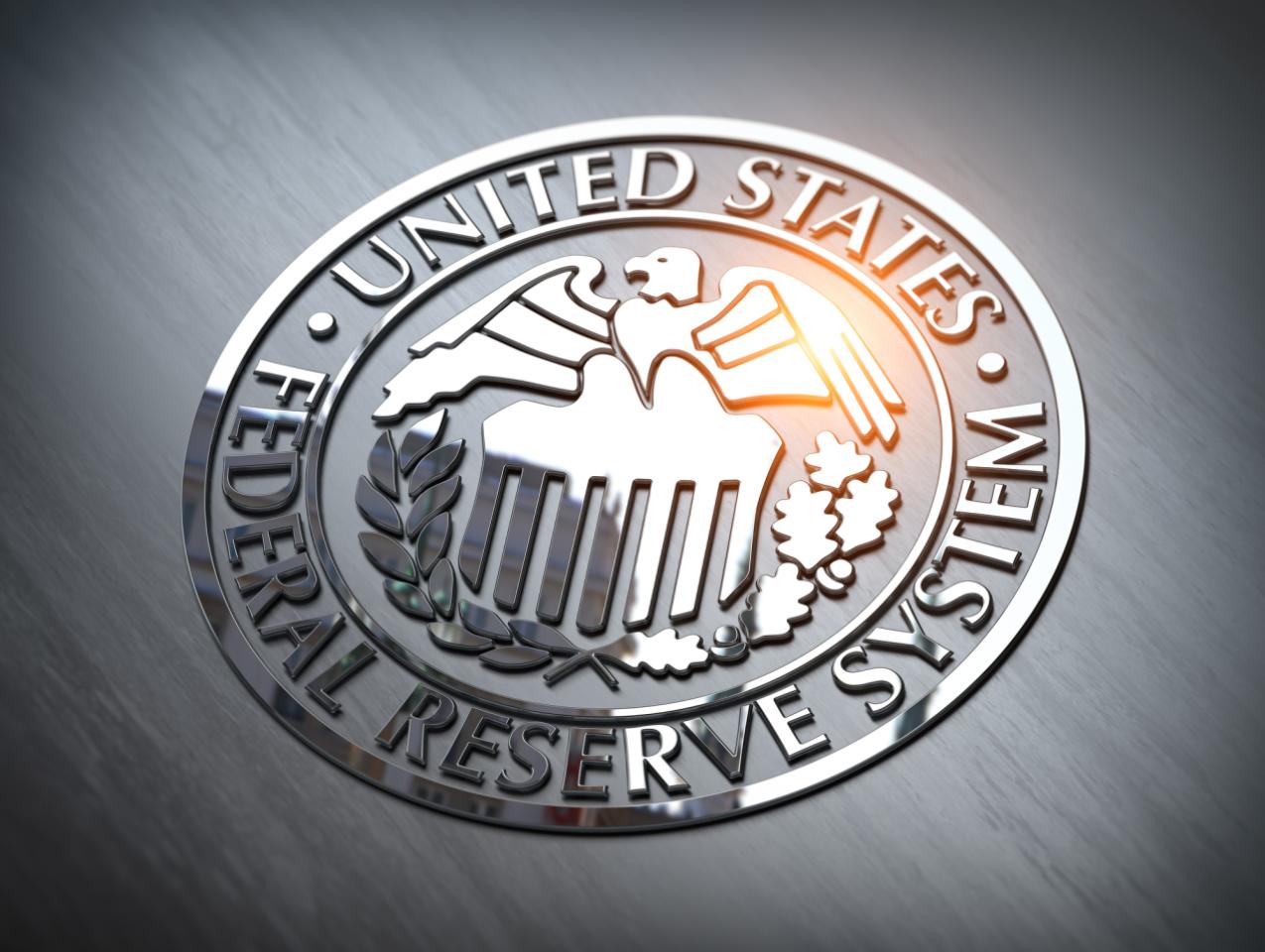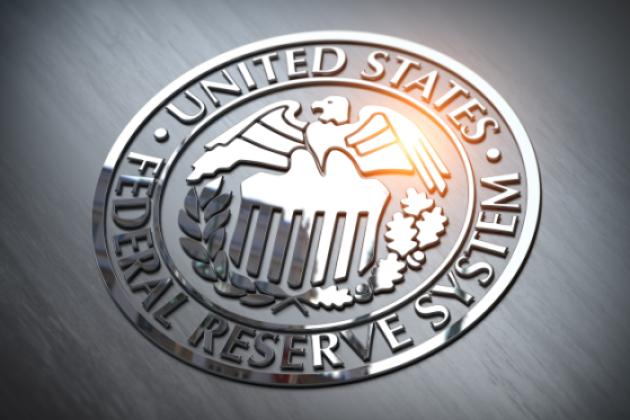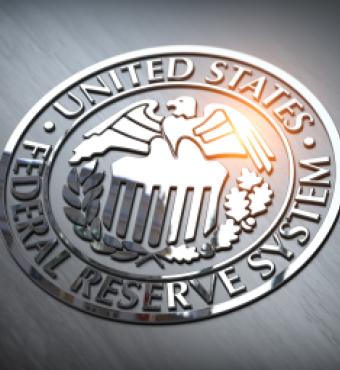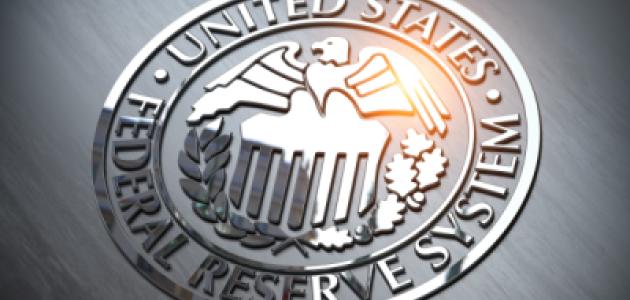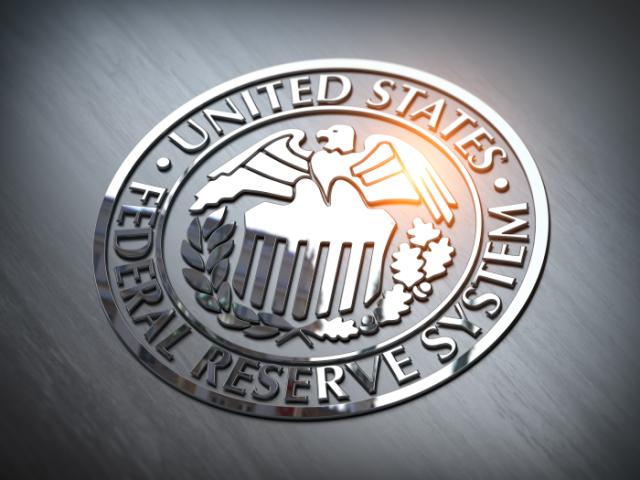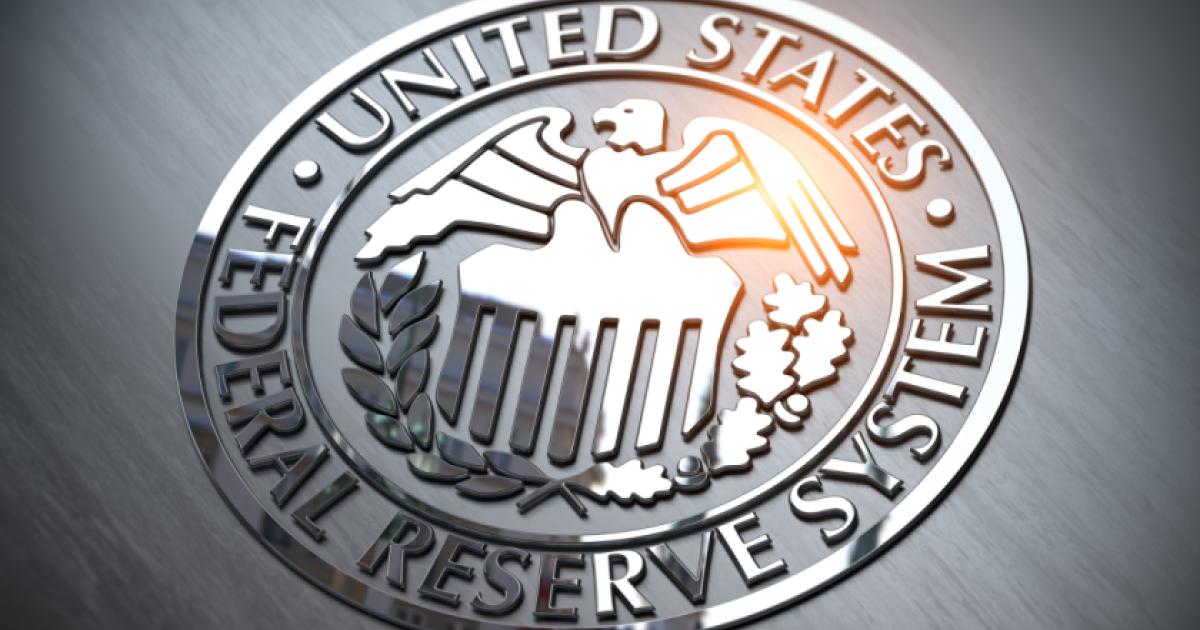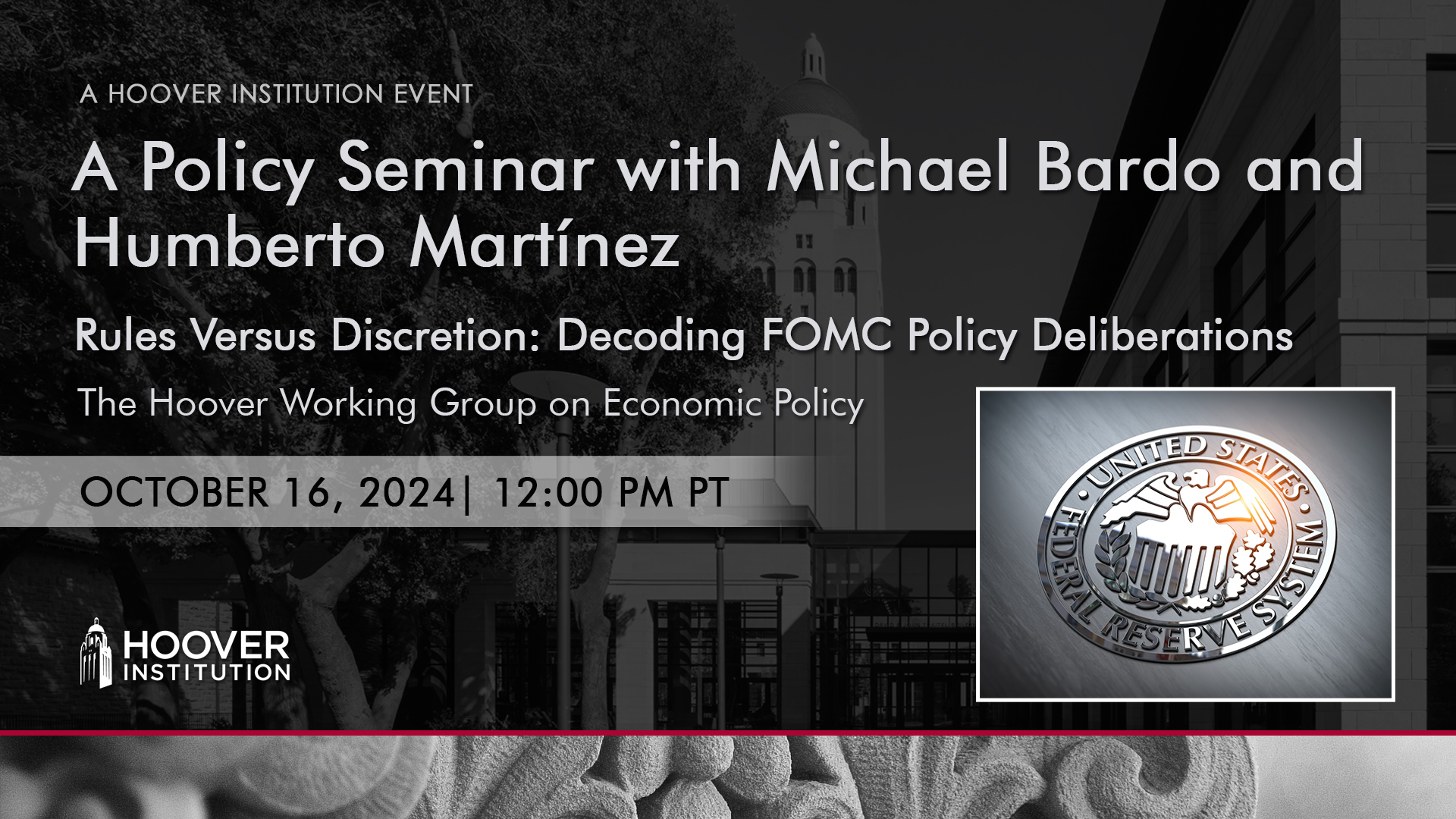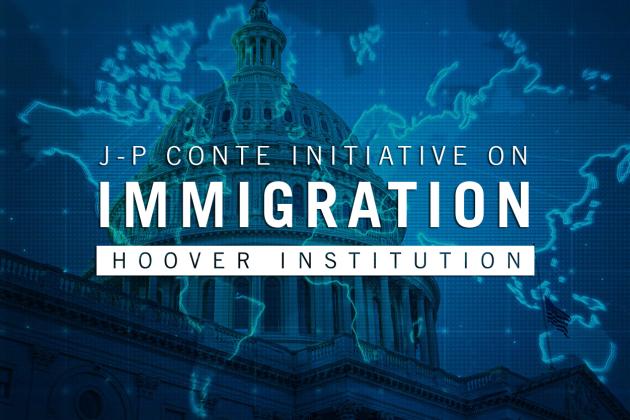PARTICIPANTS
Michael Bordo, Humberto Martínez, John Taylor, Annelise Anderson, Rafael Berriel, Michael Boskin, David Brady, Robert Chang, John Cochrane, Steve Davis, Randi Dewitty, Sami Diaf, Darrell Duffie, Christopher Erceg, David Fedor, Bob Hall, Otmar Issing, Robert King, Roman Kraussl, Jeff Lacker, David Laidler, John Lipsky, Michael Melvin, David Neumark, Athanasios Orphanides, David Papell, Elena Pastorino, Ned Prescott, Valerie Ramey, Stephen Redding, J.R. Scott, Pierre Siklos, Tom Stephenson, Jack Tatom, Harald Uhlig, Alexander Zentefis
ISSUES DISCUSSED
Michael Bordo, the Ilene and Morton Harris Distinguished Visiting Fellow at the Hoover Institution and the Board of Governors Professor of Economics and director of the Center for Monetary and Financial History at Rutgers University, and Humberto Martínez, Assistant Professor at the Economics Department at Universidad de Chile, discussed “Rules Versus Discretion: Decoding FOMC Policy Deliberations,” a paper with Klodiana Istrefi (Banque de France).
John Taylor, the Mary and Robert Raymond Professor of Economics at Stanford University and the George P. Shultz Senior Fellow in Economics at the Hoover Institution, was the moderator.
PAPER SUMMARY
This study provides evidence on the usage and preferences of Federal Reserve’s Federal Open Market Committee (FOMC) regarding the balance between rules and discretion in policy decisions. Analyzing FOMC transcripts over 40 years, we find that while Discretion has been a consistent feature in the language of the FOMC, the use of the language of Rules surged notably in the mid-1990s, aligning with theoretical advancements in monetary policy. We identify that a rise in Discretion terminology occurs during economic downturns and periods of heightened uncertainty. In contrast, a rise in the language of Rules is supported by higher references to terms such as “credibility” and “commitment,” and is more prevalent among hawkish FOMC members. Our findings link the increased use of the language of Rules (Discretion) language to tighter (easier) monetary policy, revealing a significant role of this debate in shaping policy outcomes, in particular periods.
To read the paper click here
To read the slides, click here
WATCH THE SEMINAR
Topic: “Rules Versus Discretion: Decoding FOMC Policy Deliberations”
Start Time: October 16, 2024, 12:00 PM PT
>> Speaker 1: Thank you all that you've been here and coming and all that stuff. And we're anxious to hear this amazing paper by Michael Bordo, Humberto Martinez, and Istrefi is not here.
>> Michael Bordo: She's on a plane to Australia
>> Speaker 1: but the title is Rules versus Discretion. Decoding, I don't know where you got decoded, FOMC policy deliberations.
And I think, Mike, you're gonna start us off and Humberto is gonna-
>> Michael Bordo: So I'll start us off and then Humberto will go through the crunching. And we need about 20 minutes to get the main points out, if we can hold off on the questions until then. It's great being back, and I should tell you that this paper comes from suggestions to me five years ago by John Taylor.
Cuz when I gave the paper with Klodiana Istrefi called Hawks and Doves at the Fed, and John said, why don't you look at rules of discretion at the Fed? That's the idea. Then we came up with this idea, how to do it and use textual analysis. And Steve Davis has been very helpful to us over the years in using this new technology.
So the debate about rules versus discretion goes back a long time. It goes back to the early 19th century with the Bullionist debate in the Napoleonic wars, and I could spend the whole seminar on that. And fast forward to the 20th century with Henry Simons, who made the case for rules and he had a price level target rule.
And then, of course, Milton Friedman in the 20th century with his K percent money growth rule. And now later in the late 20th century, John Taylor and his rule. And so we're really focusing on the modern literature in this paper, we're not going back. And it models monetary policy as rules based, typically using an equation that links interest rates to economic conditions, as in John Taylor's 1993 rule.
And people have used this rule a lot, tons of stuff, a lot of people in this room. And variants of the Taylor Rule align, sometimes with FOMC actions in some periods but there are a lot of deviations that occur. And some of us in this room, John, the two Johns, Mickey and I, we think that the deviations contribute to some very big problems.
The housing bubble of the early 2000s, the post pandemic inflation. There have been efforts over time to legislate rules-based decision making into the Fed's framework. In the 70s, the Congress legislated money-based growth rules, but more recently in 2014, there was the Fed Accountability and Transparency Act. In 2015, the Fed Oversight Reform and Modernization Act.
And while some academics and some former Fed officials have supported these initiatives, others oppose them. So we have two quotes here from two former chairmen. We've got Janet Yellen, and what does she say? She said it was a grave mistake to do this. And now we have Ben Bernanke, and here he says, the Fed has a rule that's a 2% inflation rate, this is a rule.
Of course, he really believed in constrained discretion, but he used this language. And there's a tension between the theoretical descriptions of policy rules, the external demands for the Fed, following rules from people in this room, from the Shadow Open Market Committee. Which we met two days ago, we had this great conference here, and what the Fed actually does.
And there's limited quantitative evidence on the Fed policymakers preferences regarding the balance between commitment, rules and discretion. So what do we do in this paper, okay? We provide some quantitative evidence on the rules and discretion debate within the FOMC. We use textual analysis on FOMC transcripts from 1976 to 2000, M15 and Humberto is gonna go through this in detail.
We provide novel dictionaries of rules, the language of rules, and the language of discretion. And we have new measures of the use of the language of rules and discretion in the FOMC. So we have sort of a number of indexes of rules of discretion and rules versus discretion.
The second thing we do is we have new evidence on the role of rules and the discretion language or terminology in the Fed's policy-making. And we have evidence on who speaks the language, the terminology, and who uses the language to advocate for rules versus discretion, and vice versa.
We make a comparison based on the literature by John, by the two Johns, by Papel and others that have demarcated rules-based versus non rules-based periods in the past 40 years. And based on that, we can relate our measures to those two periods, and we incorporate our measures of rules and discretion terminology into estimated, forward looking Taylor Rules.
And the three main takeaways from this paper, assuming we'll never get to the end, but just wanted to make this get out there is that first, and they're not that. It's sort of not like, wow, I don't believe this, if you think about it. The first is, discretion is a consistent feature in FOMC discussions, okay?
But the use of rules language surged in the mid 90s and after the great financial crisis. And we think this reflects the impact of the literature on optimal monetary policy. The second is, when we estimate these forward looking Taylor Rules, we find that when the language of rules dominates The language of discretion.
We have a measure that Humberto's gonna show you that's linked to tighter policy. The other way around when discretion language dominates rule language, that's linked to easier policy. And also related to what I said a minute ago, the measure of the use of rules and discretion language is consistent with the literature on which eras are rules-based and which are not.
And also, we find that the higher use of rules versus discretion language is associated with a higher weight of inflation in the Taylor rule, and the other way around, with a lower weight of inflation and a higher weight of output in the case of discretion. And the third thing we do is we distinguish between the people that use the language and those who use it to advocate a policy position, okay?
And in a sense, it's a new language, okay? Everybody's gonna learn French in Canada, you're told you have to have French to work for the Canadian government. So everybody speaks French now, okay? But the question is, what do you do with the language? That's the part we parse out.
And so we find that in terms of users, the FOMC members that have a PhD in economics, they all use the rules language, but other people use discretion language. That's the first thing. Secondly, when you look in terms of who's an advocate, we find that the hawkish FOMC measure, and we use the data from my early work with Istrefi on hawks and doves, okay, they use rules language much more extensively than the others.
And also, we find that the discretion language is used in economic downturns and periods with greater uncertainty, whereas in the rules language, the use of the words credibility and commitment, they often occur in periods of perceived upsurges in inflation.
>> Steven Davis: Can I ask a question? I would have thought that that would be the major distinction when rule language was discretionary, which is used, but it's a very subordinate point.
I'm thinking.
>> Humberto Martínez: Okay, thank you, yeah.
>> Speaker 5: But that is a matter of semantics. So I'm thinking about the debate on the Phillips curve and its stability. If the coefficients of the Taylor rules on the output gap and inflation differential change over time, you see that as a deviation from the rule, a period of discretion.
>> Humberto Martínez: So our result suggests that in meetings where there's high use of rules or discretion, the weights of the policy estimated Taylor rule are different. However, we haven't done the exercise that you have in mind of explicitly calculating it for some rule-based era versus non-based era.
>> Michael Bordo: Well, I mean, more generally, everybody follows a rule all the time.
All the human behavior is a mapping from circumstance to outcome. The only question is, is that one transparent, stable over time, consistent, or simple or not? And you're looking for exactly all those things. The other comment I make is it seems like everybody is for rules when the rule says do what I want it to do anyway, and everyone's for discretion when the rule says don't do what.
So look, I'm gonna turn this over now to Humberto, and he's gonna go through what we did, okay? I told you what we found. Now he's gonna tell you what we did.
>> Speaker 6: Look at how the and the extent to which newspapers, as a measure, inflationary expectations are reacting in the same way.
So the change in the weights you pick up by analysing the FOMC discussions is that actually then reflected in the media and the way people talk about inflationary expectations and projections.
>> Humberto Martínez: So as you will see, our analysis for now is just restricted to the FOMC monetary policy deliberations.
But we have thought about moving forward to see how changes inside affect perceptions outside.
>> Speaker 1: By the way, questions from outside the room are welcome as well.
>> Humberto Martínez: Okay, so, of course, thank you very much for inviting me. It's a pleasure to be here among such an amazing group of scholars.
First of all, I wanna say that, naturally, this paper speaks to the vast, extensive literature that talks about rules versus discretion, both theoretically and empirically. Let me just say, instead of focusing on what are specific contributions, let me give you an examples of why do we think that focusing on the language of monetary policy deliberations can give us lessons that we think could contribute to the literature.
So for instance, we have here in this slide three different quotes from the FOMC meetings. The first one is by Chairman Burns, the second one, by, if I'm not mistaken, President Forrestal, and the third one is by President Plosser. We know that if you notice, these three quotes signal clearly whether they favor rules or they favor discretion.
Chairman Burns says the basis of mechanical rules, I counsel against it, clearly in favor against rules. Forrestal says using discretionary policy is better than a slavish adherence to, and here's something important. He doesn't say a policy rule, but he does say a target, which is a slight difference that working with language allows us to differentiate, right?
And the third one is, of course, President Plosser, who thinks in terms of loss functions, policy rules, and a more systematic approach to policy. But also working with the language, you can also see how the evolution of the use of policy rules have changed through time here. Since we are in San Francisco, I thought we're showing you, President Parry, three different quotes in three different moments.
Starting in 1994, he says that his bank uses nominal income rules to see if the policy is too accommodative, to see the stance of policy. Then two years later, he says they used two different monetary policy rules. One is Taylor's rule, the other one is the nominal income growth rate rule.
And just a year later, it seems that the Taylor rule won the debate inside the San Francisco Federal Bank, and they use only the Taylor rule. This also is in line with our results that we find that the impact of the publication of the Taylor rule has made a major effect or impact within the FOMC and the use of the rules language within the monetary policy discussion, which I think is not surprising to any.
And finally, there's also challenges in working with text because there are people who talk the language. For instance, we have here back then Governor Yellen saying, well, that she uses a Taylor rule to assess whether the monetary policy stance is too tight or not. This is actually what we think is the first quote of the Taylor rule within the FOMC transcript.
Then we also find Kocherlakota, who talks about the Taylor rule, who talks about who uses the language. But here in this quote is actually in favor of target rules, as in the forecast-based approach articulated in our principal statement does provide exactly the kind of flexibility that we need.
And criticizes the Taylor rule because it's underpredicting the appropriate level of accommodation back in 2013. And finally we also see people who are learning the language. So, here is Elizabeth Duke, President Duke, who says thank you Mr. Chairman, I want to particularly thank you for noting yesterday that I have learned to use the lingo of the FOMC.
But I'm not yet able to plug my assumptions into a Taylor rule, so I'm gonna express myself in terms of munitions metaphors. So, we have different use of the language, people learning language, people advocating for rules over discretion. And people actually not being too clear whether their policy preferences, how are their policy preferences?
So, of course, our challenge is to turn these quotes into, sorry.
>> Speaker 6: Economic theory is clear, discretion is always better than rules. Because do what you want except the problem of recommitment, the problem of stabilizing expectations. So, you do less than you would love to do today in order to tie yourself rules so that people know what to expect in the future and that's good for the outcome of the system.
I didn't see any of that language in any courts you put up, I'm curious, why do they wanna follow rules?
>> Humberto Martínez: It's the only reason I can think of follow rule.
>> Michael Bordo: What do they say about it?
>> Humberto Martínez: Actually one of our results is related, is that when there's meetings with high levels of rules, there's also a high mention of credibility and commitment to policy, yeah, that's consistent.
So, that idea, it is used by not all of the FOMC members, but some that advocate for rule-based policy, they use that.
>> Speaker 6: There are others who follow the rules besides credibility. So it takes accountability for one, okay? That's related to credibility. Some element of dynamic game. You're a decision maker and you're facing a thing.
Last thing you want is to be constrained on what you wanna do unless there's something else to the problem. There's also communication advantages, the complex world, which again it's related to credibility, but it's not exactly care about expectations.
>> Speaker 5: Really, following up, put it this way, it's exante versus exposed talk to malady.
The tension underlying the policies for some rules versus discretion.
>> Humberto Martínez: What do you mean by that?
>> Speaker 5: You can achieve more desirable outcome, but they may be exposed, not individually rational.
>> Steven Davis: Or static versus the dynamic, the best thing now versus the best policy understood as a rule and outcome.
>> Humberto Martínez: I'm not sure we can speak to that, the ideas that you have in mind. But we do say, for instance, we do find that in terms of periods where there's heightened uncertainty regarding forecasts, for example, people tend to move to discretion. Even people, once you control policy preferences, people tend to deviate for discretion as well as times of economic downturns.
So this does suggest this idea that, well, the use of the rules language versus discretion can be subject to the context in terms of exante and exposed what they say.
>> Michael Bordo: So I think a third argument for using a rule is predictability. Financial markets like to understand when nominal interest rates will go in the future, map out as a function of economic variables.
So if you have used too much discretion, the forecastability might be gone. So that's another question along John's question whether predictability was something that featured heavily among those that David ruin banking or whether was not part of the discussions at all.
>> Humberto Martínez: I think we would need to go back and see other quotes because we haven't focused on the word of that approach.
But yes-
>> Speaker 1: Not surprising, market certainly weighs heavily on the Fed's mind.
>> Humberto Martínez: Yeah, you definitely-
>> Speaker 1: Have a tantrum and so forth.
>> Humberto Martínez: You definitely see concerns about market expectations regarding their decision.
>> Speaker 1: Also, can I?
>> Humberto Martínez: Yes.
>> Speaker 1: One thing that hasn't, I think, been mentioned about the benefit of a rule, which is that it's a mechanism for a contract among the members of the FOMC.
So I'll give up to you this time because we're following a rule, but next time it comes around, you're gonna give up to me because we're following a rule. So along those same lines, when we talk about exposed and exante, and you're looking at the words in the transcripts.
It could be that the members are using the word rules and saying at certain times when they use the word rule, I'm more principled than you are. I'm anticipating, there's a dynamic around the FOMC table about credibility in what you say around the FOMC table. So when you say rules, you say, let's stick to principles somehow versus being unprincipled.
>> Humberto Martínez: I think what the last two comments highlight is something that we haven't explored sufficiently, is the dynamics within the deliberation of monetary policy and how language affects those dynamics. For instance, if the chair speaks first and speaks in terms of the rules language, how do the other people follow or the other way around?
That is one other advantage of using FOMC transcripts as we do. However, we do have the information of the order and who reacts to who, for example, but we haven't explored that yet, so that's something that we can do. So let me try to, of course-
>> Speaker 6: You may have already heard-
>> Humberto Martínez: Please.
>> Speaker 1: There are two aspects, what about the notion of how the economy's operating? You mentioned recessions, etc, but what about that? Our standard way of looking at this led us astray about the economy and the context that causes in this discussion. Okay, so the inflation in the late 60s, 70s was under predicted by most economists, etc.
The disinflation of the 80s was under predicted by most economists. When the Fed lowered the funds rate to zero in December of 2008 to combat the global financial crisis, it was expected to stay there for nine months and stayed there for seven years, I could go on and on.
So the economy behaved in different ways. And it wasn't just whether we were in recession, but just we were surprised about our notions of how the economy operated and how that changed. And also how tremendous changes in the nations which themselves might have been endogenous. We ended Reg Q money market funds developed go on a zillion things.
Banks are and similar financial institutions, only 30% of credit extended now, 30 years ago they were 75%. So all that's going on. So how do you separate kind of the dancer from the dance is what I'm getting.
>> Humberto Martínez: So what I can speak to, just to your comment is that specifically to the period after the GFC, we're gonna see that we see a spike in the rules and discretion language.
And when you take a look at the quotes, you're gonna see that the discussion that happening FOMC was, okay, so we have QE. For instance, Plosr was defending the idea of do we have a rule of how to implement this type of unconventional monetary policies? Also there was a discussion at some moment, should we have a stopping rule?
Should that stopping rule be based on employment thresholds, for example, or should it be based on State contingent policies, so I wouldn't say that they recognize potential mistakes, but they do seem to adapt the language to what's happening around them.
>> Speaker 1: The other thing I wanted to raise is there can be a lot of discussion that doesn't use either discretion or rules.
When John and I wrote in Economic, before the president said monetary policy should be rules-based. We spent a lot of time thinking about our language, if you remember John. So people could have that framework, but not actually discuss it formally as a rule versus discretion.
>> Speaker 6: That particular Economic Report of the President used the language systematic policy.
And that's also the language that John uses in his 1993 paper on the Taylor rule, which he describes as an example.
>> Humberto Martínez: So, actually that's a perfect segue for me to continue because once you see how we do it, we focus on the language of rules and discretion inspired by the modern approach to monetary policy.
And we try to evaluate the evolution of this language within FOMC. So, to set expectations correctly, we are studying the role of this particular language in monetary policy deliberations. So, maybe we are missing some part of the language that we are not capturing yet. But, of course, your feedback is valuable to us, so, let me just start by saying what do we do?
Now, of course, the challenge is to convert text into numbers, so we focus on the sample of FOMC transcripts available, to the time of the start of this project. We watched between April, 1976 and December, 2015, we're yet to update our dataset to latest FOMC transcripts. Specifically, we focus on regular meetings and the section of monetary policy deliberations.
So, we don't work with the section of the economic outlook policy go-around, or when they talk about foreign transactions operations. We just work with the section of monetary policy deliberations, we focus on what is being said by FOMC members, regardless on their voting status at the moment from all FOMC members.
And we break down the transcripts to the census level.
>> Speaker 5: Can use any of this for training purposes.
>> Humberto Martínez: Sorry.
>> Speaker 5: The language processing.
>> Humberto Martínez: So, let me go to that and see what you think, so, what we do to convert, we're gonna use the dictionary approach to convert text into language.
This is a widely used method in social science and is the backbone, for instance, of the Economic Policy Uncertainty Index by Steve Davis, who's here. And the problem with that approach is that we need a dictionary, right? We need a dictionary, blurb keywords that are later used in the text, and somehow the number of times those keywords show up in the text are turned into a quantitative measure.
But there's no rules and discretion dictionary, so the first phase of this project was to create this dictionary.
>> Speaker 6: Can you clarify what you mean by 7%?
>> Humberto Martínez: Yes, so what we do is that we focus on the subsample of FOMC transcripts. These are the FOMC transcripts, the first meaning of each year of FOMC meetings.
We read them, that correspond to 7% of the total number of sentences that's going to give an idea of how much we read. And, in that phase where we read the three authors, we try to identify rule statement, we're talking about rules statement policy. Such as statements that were referring to commitment to goals, clear and transparent forward-looking policies.
And we tried to identify, as well, rule discretionary statements, which were talking more about the need for flexibility or adaptability of the monetary policy decision.
>> Speaker 7: Why are you reading as opposed to making this mechanized, which I think was the same question.
>> Humberto Martínez: So, the problem is that if you wanna train an algorithm, you need to label some statements.
So, what you do, I'm not sure what AI can do right now, but five years ago when we started this, so you needed to have statements labeled as rules of discretion, or neutral, or not in the debate. And then you need the computer to learn to identify which ones are rules, which ones are discretion, and so on, right?
However, for that to be successful, you need a lot of sample, and here we only have, at the end, 333 transcripts, which, in terms of what these type of algorithms do, is not enough.
>> Speaker 7: So, you don't need to train a model on a bigger body of text, like academic research about this topic, and then use it?
>> Humberto Martínez: We don't train a model, we follow the dictionary approach, basically, we selected, after we read some transcripts, we ended up with 47 keywords. And what we do is that we use these keywords to see how many times they show up in the transcripts, and then we quantify quantitative measure.
So, let me first show you what are the finalist for the moment, of course, of our dictionary. So, we have discretion, as I mentioned, more words that are related to the need for flexibility of the adaptability. So, we have gradualist, pragmatic, flexible, open mind, for instance. And also, on the other category, we have rules which are more about commitment to clear goals and transparent, so we have rule, of course, systematic, transparency, accountability.
So, we believe that this dictionary, in terms of what we understand by rules, goes a little beyond of the literature on policy rules. Because we also include words about transparency, accountability, predictability, at least the empirical exercises that just focus on deviations of policy in policy rules.
>> Speaker 7: Are there some you think of as need more information, whether they're one or the other, for example, adaptability, somebody's family wants to.
>> Humberto Martínez: So, how we dealt with this is that we made an audit to this dictionary, and of course, this is not perfect. And what you just said incorporates or describes, basically, the challenge of working with text and working with an algorithm that doesn't understand, not only context, but is working with transcripts where we don't get the tone of the statement, right?
You can be sarcastic saying something or you cannot be sarcastic saying something, for example. So, what we do to be confident of what we're having is that we audited the algorithm. And we find that, overall, close to 85% of the algorithm coincides with human classification of the statements.
So, that's what I could say about that, of course, it's subject to errors in some cases, yes?
>> Speaker 1: In contrast to the suggestion made over there, I wanna endorse the idea that your procedure was to go and to read the transcripts, and then to figure out how to construct your definition.
Because I've done a little bit of this, not with language processing tools, but simply with search. And I searched on things like inflation target, and what I found is you need to read the paragraph. And figure out what's going on, and so I think you're doing exactly the right thing.
However, your left hand column shows the subtlety of this business because, and the real challenge for researchers, think about the word opportunistic. If I said Valerie was opportunistic, it would not be a compliment, however, it was a desirable strategy from the standpoint of Cohn and other members of the Greenspan Fed.
Revisionist use of the word opportunism to mean taking advantage of one's opportunities, and when orphanities sought to model this, he described it as an opportunistic policy. And the idea was, we're gonna reduce inflation and we're gonna do it when the economy is soft and it was identifiable as a rule.
At least Athanasios can speak more to that. Are you gonna say more about the audit?
>> Humberto Martínez: Yes, we can see more about the audit.
>> Speaker 8: If I can add something, I would say something on this. Yeah, so I actually put a comment just a few minutes ago, that opportunistic approach, as was discussed in the 90s, it was viewed as a rule, so I agree with the comment that was just pointed out.
But I have another question on this as it relates to this, so from the 90s on, there are optimal control exercises in the blue book and then the tale book that are quite often used as a discretionary approach, not as a rule. So I see on the table here that the objective function, and the loss function, which is associated with those kinds of approaches, shows up on the rules, not our discretion.
So there are different ways to look at what do we mean by rule, and what do we mean by discretion, and this may relate to how the staff has been presenting the material to the committee. So one piece of advice going forward for this is that, it may be useful for a later project to actually link the presentation, and then discussion in the blue books and teal books, since we have them, the briefing material.
And see how that relates to how that language is being used at the meeting, cuz I think there is a correlation, very high correlation, I would expect to see.
>> Speaker 6: Well, and the word gradualism also has the characteristic that it can be part of an optimal policy response, the standard new Keynesian model, when you're trying to disinflate or when you're starting up.
And so there's subtlety, and what I would encourage you guys to do is to come up with several different dictionaries that weight these words differently and see how much difference it makes for your conclusions. That's what semantic similarity would do.
>> Speaker 5: Yeah, let me processing AI standard by now, AI processing, they have semantic distance entropy measures.
>> Humberto Martínez: Yes.
>> Speaker 5: You could do that in that's what people do with 100 years of census, disconnected census records.
>> Speaker 7: But is an AI dictionary gonna think that opportunistic is good or bad?
>> Steven Davis: I guess you're losing sight of his goal here. You've done this audit, okay, you've made your best expert judgment as humans, as to what constitutes discretion, in favor of discretion, what constitutes in favor of rules, and then you've constructed a dictionary.
The obvious way, it seems to me, to evaluate the performance of the dictionary is not with reference to what external discussions are saying or how academics use the term. But you've got a bunch of candidate terms here, and you can just try every permutation of these terms, and for every permutation of the terms that you think are relevant, you can construct a metric of how well that term set mimics the humans.
And you're the expert humans, so we got to rely on your judgment. Somebody can come along and do a different judgment, but that's the target you're trying to optimize against. That's all it amounts to, and it's not that hard. Doesn't require any sophisticated AI, you've got everything you need to do it.
Maybe that's what you did, at the end of the day, I'm not sure.
>> Humberto Martínez: Yes.
>> Steven Davis: And it speaks to these things like, okay, gradualism, what does it mean? The relevant question is, what does it mean to us or what does it mean in some academic context, what does it mean in this context, that's what they're trying to figure out.
Or what? Well, that's where we rely on their judgment, they are the experts, they're making some classification of what constitutes a rule, what constitutes discretion. We can probe them about that, but at the end of the day, they've got some expert classifications, and unless we're willing to go and do our own expert classifications, that's the target we wanna optimize against.
Okay, and you got all the Kennedy terms up here, we can throw other Kennedy terms, but if you take all the possible permutations of these terms, we're gonna get a few hundred thousand. You can construct a different index of rules versus discretion for every one of those permutations, and you can optimize against it.
That's it.
>> Humberto Martínez: Okay.
>> Steven Davis: So what we did was we read the paragraphs and we thought about that, okay, the context, what's going on in the world.
>> Speaker 1: Okay, and I knew what was going on in the world, and then, how do these paragraphs relate and what was the intent?
We could tell by reading through the FOMC, okay, in any given year, you know what was going on, and you knew what the context was. And that's how we came up with that, with those words. So some of what we're discussing here is not really about rules versus discretion, what world you think you live in.
So it's opportunism, a Taylor rule is kind of for a linear economy, opportunism is a rule, it's a more complicated rule that you adopt. If you think you live in a very non linear state dependent economy, and there's times when there's opportunities which aren't the kind of models that really lead to Taylor rules, this is gonna also show up at the zero bounden.
All of a sudden now we're in a world that does have a clear non linearity, and your actions are gonna be different from the old rules, even if your intent is the same. So it's not just, this is the problem, there's always a more complicated rule, and some of what we argue about, if we say rule, we mean pay the rule.
Some of what we argue about isn't just acting predictably. We can move beyond a binary classification to a multi way classification, that's it. They've given us a binary classification, as I understand it from the human reading. Right. And unless you wanna go back and read it and come up with a finer, more granular classification, that's what we're stuck with.
I'm endorsing what they did, I think the meaning of what they did has more to it than just are we rules or discretion? It's are we rules in kind of the world that most of us think we live in, as opposed to are we rules in a very non linear state dependent world that we think we know how to manipulate, even in a more complicated world.
And that's kind of what you mean by rules versus discretion. Size here is a little bit different from what I at least understand to be the first use of this sort of technology on the FOMC transcripts, which is work by Adam Shapiro. And I believe it's David Wilson from the San Francisco.
Francisco Fed where their objective was to say, what did the FOMC members think about the long-run inflation target? They looked for each guy, did he say 1.5, did he say 1.75? There was a very unambiguous target of the search that made the enterprise, in some sense, easier.
>> Humberto Martínez: So, I think we can move into the results, what we have, and we can base our discussions on that, and we could come back to, I want to hear what you did with the audit.
Of course, before that, we could move into the audit and then,
>> Michael Bordo: You told us which audit to do, we're following your suggestions.
>> Humberto Martínez: I have this in the appendix, so as I was mentioning before, what we did is we constructed, a dictionary that we started, we identified over more than 150 keywords.
Then by going back to the text and reading the dictionary, we ended up not as a process, as you suggested, Steve, as rigorous, that first part. We ended up with more than 47 keywords, but then we did two audits. The first one is we used the previously identified documents or statements that we labeled as rules or discretion, and we tested our algorithm against that.
So, the first thing is that, of course, this algorithm just counts and doesn't understand context. And therefore, the algorithm only classifies or found keywords in 33% of statements used as rules or discretion. However, within those that it did classify it correctly classified towards either rules or discretion, as suggested by the expert classification, close to 90%, of the remaining statements, right.
>> Speaker 7: Well, do I understand that only one-third of the statements that the humans identified as speaking to the issue were picked up by the algorithm?
>> Humberto Martínez: Yes, in another way, only because it is a limited list of keywords.
>> Speaker 7: Okay, but that's already a big problem Two-thirds of the paragraphs that the expert humans, you guys, think are relevant to the issue are not even getting identified by the algorithm speaking to the issue.
>> Humberto Martínez: So, the problem that we find is that, of course, you can extend the algorithm, the dictionary to find more words. However, at the same time, you increase the probability that you incur in false positive rates or misclassification.
>> Speaker 7: Sure.
>> Humberto Martínez: Probably, following what you're suggesting, we can improve that number, definitely.
>> Speaker 6: So, you mean 33% of all sentences were classified as having a rule or discretion flavor, that's what that means? The two-thirds of the sentences were just other stuff that didn't have any strong flavor.
>> Speaker 1: Two-thirds of the sentences that they as expert readers thought spoke to the issue don't even get identified by the algorithm.
How is that possible it was just counting words?
>> Humberto Martínez: Because they don't have words that are part of the dictionary.
>> Speaker 6: Dictionary was small.
>> Speaker 7: Then how did you select the terms in the dictionary?
>> Humberto Martínez: It was going back and forth, let's say that that part is not as rigorous formula, we can improve definitely on that side part.
>> Speaker 9: And all of that was in-sample, right?
>> Humberto Martínez: That's in-sample, we also do an out-of-sample.
>> Speaker 9: We didn't make any decisions about your classification based on the out-of-sample.
>> Humberto Martínez: Not that I can recall, not that
>> Speaker 8: Do I understand correctly that you might want them to identify relevant paragraphs and then choose and then,
>> Michael Bordo: I understand that, are you working at the paragraph level or the sentence level?
>> Speaker 8: Ten years here.
>> Humberto Martínez: Here, the audience is at the paragraph level, because,
>> Speaker 8: Paragraph?
>> Humberto Martínez: Yeah.
>> Steven Davis: This part of the analysis is suitable for just plugging it into a standard AI classifier and then see, my guess is you can do a lot better than this.
You've already done hard work which is to read all these things, these paragraphs, and identify them as one here, you can actually take off-the-shelf binary classifiers. I'd be very surprised if they don't do better than your dictionary.
>> Speaker 8: Right, cuz I think what this means is you saw sentences as indicating rules or discretion, even though the keywords weren't there.
And that's probably exactly what a language learning model would probably identify.
>> Steven Davis: Okay, one more thing to trouble, we use dictionaries in the newspaper-based stuff because we don't have access to the raw underlying text and there's massive volume of it. And we are doing a simpler exercise, frankly, a simpler classification exercise.
Here you have the whole text, you can just take Bert, off-the-shelf Bert algorithms, which are easy to access, they're pre-trained, you can train them on your data. My guess is they'll do a far better job of replicating whatever you guys are doing with your human
>> Speaker 8: So, then the output would be a different dictionary, is that,
>> Steven Davis: Dictionary at all.
>> Humberto Martínez: It's a different approach. Yeah, it's a different approach.
>> Steven Davis: Implicitly it's some really complex dictionary, but it's not easily representable in that manner.
>> Humberto Martínez: It's a different approach.
>> Speaker 9: I mean, to me, it sounds too magical, I mean, they don't have all that many iPhone C statements.
I mean, how many paragraphs do need to train an all-good like that.
>> Steven Davis: I've had good success in training things with simple binary classifications with 500 to 1000 observations.
>> Humberto Martínez: Okay.
>> Steven Davis: Then you can evaluate it out of,
>> Humberto Martínez: Yeah, yeah.
>> Steven Davis: You can evaluate it out-of-sample to see how well it performs.
That's not the end of the story, you fit it with a Bert model, for example, then you evaluate it out a sample and see how well it does.
>> Humberto Martínez: Well, thank you for that.
>> Speaker 8: Bringing further along that line, you could also just ask Chat GPT right, use a standard large language model
>> Steven Davis: The reason I prefer something like Bert is because it's stable.
>> Speaker 5: Yes, exactly.
>> Steven Davis: You pin it down, it's not gonna change from one iteration to the next, these Chat GPTs are always changing it, so it's not replicable in that sense.
>> Speaker 7: Right, it's a good first cut, though.
>> Humberto Martínez: Thank you very much for that comment, Steve. Well, having said that, with that in mind, let's move on to the results so we can talk a little bit about the empirical results.
So, what we do is at the end, we count how many times the frequencies of these terms are within FOMC transcripts. And because we're working with sentences, we could count them at the meeting level and at the speaker meeting level. We can give a measure for each speaker at each meeting.
What we have is four indices, one for rules, one for discretion. One that we consider is the proxy for rules and discretion, which is the sum of rules and discretion. And one would be considered as the relative use of one category versus the other, which is just the difference between the rules minus discretion.
Of course, these are all to be understood as percentage of total words. That is, if you see an R for the meeting of 2004, January of 10%, that means that there's 10% of the rules we identified of the total words in the transcript are related to this category.
Okay, this is the graph for r plus d, right, rules plus discretion, so we ingested. Interpret this series as a proxy of the use of the language, making no separation between rules or discretion. What we observe is that starting the 2000, there's an upward trend, and we estimated structural breaks that actually pointed out to 2003, if I'm not mistaken, an upward trend in the use of rules and discretion language.
However, we do wanna highlight that there's an important peak in the mid of the 90s, which is related once if you break it down between rules and discretion, which is related to this increased use of the rules terminology between 1995 and 1990 and the 2000. Yes, John.
>> John: Interpretation question.
Just because we're talking about rules more, it doesn't mean we're following rules. Quite the opposite. If you're actually following the rule, you don't have to talk about it or talk about it. When there's a fight about it is actually when you're.
>> Humberto Martínez: I think what you just said reflects the peak after the great financial crisis, which actually signals that there's a lot of talk of rules.
Precisely because there was this discussion about how to interpret this idea of rules within the unconventional monetary policies and the context of that time.
>> John: Back to the question, what are you trying to accomplish with a human reading?
>> John: What are they in their human readings? That's what they compared it to.
What's your goal in the human readings? Adherence to a rule or just mention a rule. Advocacy of using a rule. We make that distinction between using the language and advocacy.
>> Speaker 7: So, yes, and that's one of the things that he's gonna tell you about, because there is a difference.
>> John: Advocate for rules if everybody on the other side of the table isn't doing it, we're all in agreement. I don't even have to advocate for a lot.
>> Speaker 6: I mean, a good part of the use of the language is because of that. Okay, so if you know the people involved, some of the people that were here two days ago, like Foster is probably the loudest and lacker.
Okay, and these guys are saying, you got to do this and the others aren't listening. So you're right. And that's why you get that huge spike there.
>> John: This is an interpretation question.
>> Humberto Martínez: So, our interpretation of our measure is about use of the language. We believe that although it will be great to have a measure of advocacy, whether for rules or discretion, we believe that the tools that we are using cannot bring us to that yet.
So we make an analysis of whether, who uses more of the rules and try to understand, interpret our results based also on advocacy.
>> Speaker 5: You showed us there was a mix of both of fresh notifications of the decision. I'm supposed to be I'm eating my veggies. I'm supposed to as opposed to I wish I didn't have to eat my veggies.
The statements of the precedents you reported had both flavors very distinct, meaning of debate on rules.
>> Humberto Martínez: Yes, they are statements that clearly show a preference for either side. But there are also statements that just use the language in terms of, for instance, there was talk in the conference about using the rules as guidepost.
That doesn't mean people, if they use them, they make decisions based on those rules or not. Probably they use the rules to deviate on purpose sometimes. So we are just talking about language, going back to.
>> Speaker 7: Another issue is. We're being discussed, changed tremendously over this period. Back in the 70s and 80s we had exchange rates to money supply, blah blah blah.
Are you going to say anything?
>> Humberto Martínez: Yeah, we're gonna say something about that. Let me just go quickly. Five minutes. If you guys can give me five minutes to go through the exercises, then Michael can finish with the historical interpretation of our results. So there's a section where we try to understand the evolution of the driving forces behind the use of this language within the FOMC in the paper.
So we think about the role of staff, something that Asanasios mentioned. We also take a look at our measure within the blue books to see what came in first, who brought in the language. Especially if we see this upward trend starting in mid 90s, we compare it between chair, chair and FOMC members.
We compare also between incoming FOMC members and incumbents in a way to say it. Overall, we believe that the role of the optimal monetary policy literature is important and it was introduced through new members of the FOMC mid 90s. But let's move to rules and discretion. How do we evaluate the rules and discretion terminology?
So on the left hand side we can identify there's only two periods where rules versus favored over discretion terminology. That is between 1995 and basically 2000s and after the great financial crisis and the rest of it is mainly discretion over rules. Just to say something. The peak on the left, if you take a look at the quotes, is more about people using rules to implement policy, tailor rules or other types of rules to implement policy.
This is when it was introduced for the first time and when in the green and the blue books they started showing up this type of analysis simulations. But later on, what I mentioned previously is more about discussing how to think about rules within the zero lower bound, within unconventional monetary policies.
>> Speaker 8: Focusing here on the variation across time. But you also have it by member of the FOMC, right? How persistent are some people, mainly rules people and other people more discretionary people?
>> Humberto Martínez: Yes, we can do that measure exactly. And this is what we have on the right.
On the right we have it by speaker of the FOMC and meeting. As you can see, firstly, I just wanna highlight that before 1995, most of the outliers, which are the people whose name we show are basically discretionary, or they use their language towards discretionary. After 1995, we see that there's clusters of both people who use rules terminology over discretion versus people who use discretion over rules statements.
But interestingly, after the great financial crisis, we see that the discretionary people disappear and there's a unification of language. So in the middle there's people who don't speak the language at all. There's a lot in that line in the middle, in Greenspan and beforehand, there's a lot of people just that there's bullets on top of bullets.
Then you see that more people deviate from, they speak a little bit the language either through rules or discretion. We actually do have in the paper extensive uses of the language in terms of how many people are actually saying. So at the beginning of the sample, up until the 2000, was about 20% of FOMC members who use any type of keywords.
And after that, that increased about to close to 50%.
>> Speaker 8: Have you thought about netting out the personalities? So how much does this change because of composition of who's there versus what they're saying, just by sort of a regression kind of analysis?
>> Humberto Martínez: Let me show you what we have and let me get back to you and see if we are doing that or not.
So the first thing that we try to understand is at the speaker level, of course, the language that I, as Humberto Martinez, come here to. To use will depend on who am I talking to, where am I talking to, how I feel today, and also on my background policy preferences.
What I mean by that, it depends on the context of the meeting, but both macroeconomically as well as institutionally, as well as my background and policy preferences. So, what we do is that we try to control for those two different aspects separately. So, the first set of results that I'm going to mention is we control for meeting fixed effects.
And we pretend that these fixed effects are going to control for the macroeconomic outlook of any meeting and the composition of the FOMC, who's the chair at that moment. And what we find is that discretion over rules is used more by lawyers and non-PhD economists. Whereas in the other side, rules over discretion is used more extensively by people who are trained PhD economists and hawkish FOMC members.
>> Speaker 9: Sense for how big the differences are and other lawyers always using discretionary language, and PhD is always using rules, probably not, right? And so is it a minor difference? Is it a big difference?
>> Humberto Martínez: Yeah at this point, I cannot recall but that is a good magnitude.
And now, the other way around this, okay, let's try to fix this, let's introduce individual fixed effects. So, we control by background and policy preferences and see how the outlook affects decisions. We find that as mentioned before, discretion is preferred over rules terminology during economic downturns and episodes of greater uncertainty.
Whereas the other way around, rules over discretion correlates when meetings have a greater mentions of credibility and commitment. Professor Bordo has a theory about that, maybe he could talk later about it. This is an interesting chart, I think I don't have much time left, but this practically signals that before we break down between hawks, doves and swingers are rules versus discretion index.
This shows that before 1995, every type of FOMC member was discretionary of course this is the sum of all. After 1995, we see that those who first pick up the language are hawks, whereas doves and swingers stay being discretionary. However, with Bernanke and Yellen, what we see is actually a unification of the language between policy preferences.
Which highlights the difficulty to differentiate between the users of the language and the ethics.
>> Speaker 8: Share of economists, greater than under.
>> Humberto Martínez: Yes, okay, then we finally-
>> Speaker 5: May I ask you, do you think this convergence or relatively greater convergence was by design, an effort to build more consensus that public part of decision making.
>> Humberto Martínez: I think Professor Bordo can talk to that, whether what was the intent behind Bernanke hiring more PhD economists. What I understand is that he started implementing type macro seminars FOMC.
>> Speaker 5: Everyone was asking about the lines and that you were commenting about, among the fact that the three lines get closer during burn.
There was some discussion about this during the conference, I was curious these past two days.
>> Humberto Martínez: Okay, maybe I can talk to you later and see what you mean. Okay, finally, relevance of rules versus discretion language in terms of monetary policy. How do we attack this question? We do it through three different exercises.
First, let me just say because we understand that there's this change in composition, we work with a detrended version of our index. That is, we take our index formating at meeting T and we subtract the average use of the moving average of the latest eight meetings, that is the previous year of FOMC meetings.
As a way to say this index measures, well, extraordinary uses or for that moment in period of time of this language of rules. Very positive, which suggests that relative to the previous year, there's a greater use of the rules versus discretion language. If it's very positive, if it's very negative, then relative to the previous year there is a greater use of the discretionary language over the rules language.
So, the first thing that we do is that we compare, okay, let's see how our index behaves in periods that the literature has identified as rules or discretionary based. So the first period is by Papel and co-authors. They signal that there's a discretionary period between 74 and 85 and between 2001 and 2013.
That would be the three bars that we have on the left. And we see here that on average, the rules versus discretion index is negative and tends towards discretion. And this is mainly led by using discretion. If you compare that to the period between 85 and 2000, which according to these authors is one of the peers they identified a rule based.
We see that during the rules-based period, there is a greater average of our index, driven primarily by the use of lower discretionary language. Not precisely, but by the use of more rules language, but more less discretionary language. Now we think about the years of 2003 and 2005, which several have identified as a discretionary base years.
We see and compare that to the other years in our sample, we find that our average use over the index is extremely inclined towards discretion. Explained by both higher use of the discretionary language and lower use of the rules language. Now, the second exercise that we do is that we estimate if overlooking table rule following Koivo and Gordychenko and what we include.
We just augment this Taylor rule with our rules versus discretion index. So what do we find? So we have here different pair of columns. Overall, we do find for our whole sample from Burns, Miller, Walker. And for Greenspan, which are the first three groups of columns, we find that the Taylor principle is satisfied.
And specifically in Greenstone, we also find that there's a weight for GDP growth and output gap. But in terms of our interest, what we find is that the rules versus discretion measure is only significant for monetary policy decisions for the error of an increase.
>> Speaker 8: Let me send a variable here as well.
>> Humberto Martínez: The dependent variable is the policy rate decision at the meeting T, is the interest rate.
>> Speaker 1: A rule, strictly interpreted, a simple rule would mean you just have small residuals on either side, right? But that's not what you're doing here, as I understand the regression, this is a one-sided deviation.
Do I misunderstand the coefficient?
>> Humberto Martínez: Yes.
>> Speaker 1: Yeah, so it's not just asking whether a rules-oriented period is one with small deviations from the rule?
>> Humberto Martínez: No, this is asking if we can, Can explain something about the residuals with, if we could extract from the residuals something with our measure.
>> Speaker 6: When they talk more about rules, they tend to set higher interest rates. Lower, right?
>> Humberto Martínez: Yeah.
>> Speaker 6: Which is if you're evaluating adherence to a rule, it's something about you're shrinking the individuals. That's a difference. That means you need to look at the evolution of the absolute deviations.
So that's, that's what, that's kind of what we.
>> Speaker 6: The absolute value of the first stage of regression and regress it on your index, R square the ones without the index. Another way, look at the R squared on the, on the columns that don't have the RVD on it.
Net. Yeah, right away til three.
>> Humberto Martínez: So my interpretation of the greenspan, if you compare the one with it and without it is that we are capturing something about the residuals with our index.
>> Steven Davis: I understand but it's not, it's one sided. I mean there's a lot of things you could do it, you could just take the regressions without the RVD thing.
>> Humberto Martínez: Hmm.
>> Steven Davis: Compute the absolute values of the residuals on that, plot those over time and plot that over time against the RD index. Or you could make a scatter plot or you could do a second stage regression. But in some sense adherence to a rule says that you ought to have smaller absolute mean residuals.
So why does it equal square answering that question? The r squared is, but it's a rather indirect way to get at it.
>> Speaker 5: Okay.
>> Steven Davis: And it doesn't tell you which period you're doing well and which period you're doing poorly. Which a time series.
>> Humberto Martínez: So.
>> Steven Davis: What if there r square is one then you're following the rule exactly.
>> Speaker 7: The R square is. Yeah, maybe they are following your problem exactly.
>> Steven Davis: In some periods in a time series plot would show you that.
>> Humberto Martínez: That is yeah, I agree with you that that would be an exercise to evaluate the policy in terms of policy, in terms of rule of discretion here.
We just want to see if the language play any role in terms of the decision of the policy. We're not evaluating it. So it's a different kind of exercise. But I think that what.
>> Speaker 8: That it doesn't change the R square much at all.
>> Speaker 5: It's very high and very stable.
>> Humberto Martínez: That's probably because there's a lag of the interest rate. So this is an inertial rule.
>> Steven Davis: Well, that gets to the high r square. But the addition of the r versus c doesn't change the r squared, which seems very little prediction.
>> Speaker 11: Within the Greenspan period there's times of more rules and times of less rules.
And that's what the RVD is saying. Within the Greenspan period, times of more rules talk is tighter and times of less rules talk is looser. This is a constant in the regression. So that is the. I was wrong about our--.
>> Speaker 1: That's a good way to put it, because that makes clear it's not at all about adherence to the rule.
>> Humberto Martínez: Right.
>> Speaker 11: Exactly.
>> Humberto Martínez: Yeah.
>> Speaker 8: It's about whether the influence.
>> Speaker 11: Steve's right, you want to look, even.
>> Humberto Martínez: So.
>> Speaker 11: It doesn't answer this question at all.
>> You want to look at the r squared in the, when the parts where the IVD was hard and the parts, or look at squared interest rates or something else.
>> Humberto Martínez: Okay, so agreed, this is a different exercise, the one you had in mind. Let me, let me try to explain what, what's behind this coefficient, 0.2454, which in terms of magnitude suggests one standard deviation of our index. So, increase of five basis points. But in the long run, considering the lag of the equation is 70 basis points of tighter monetary policy.
So we could break down this between rules and discretion. Instead of augmenting the Taylor rule with the RVD, we just include rules and discretion separately. And what we find is that the effect is driven both bye, more language of rules, tighter policy, and more language of discretion, easier policy.
Now, if we include this also, we include indexes by type and policy preferences of FOMC members and their index as well. We see actually that the effect is driven basically because hawks speak more rules. That effect is related to tighter policy, whereas when doves and swingers speak more discretion is related to easier policy within the Greenspan period.
>> Speaker 9: Is that conditional? And economic conditions?
>> Humberto Martínez: Yes, that takes into account this regression, takes into account the forecast that the FOMC has on inflation output gap and, and JP Gore.
>> Speaker 7: There is a causality issue here. If hawks are winning, then policy is tighter. And by the way, hawks use rule language, you know, there's a causality,
>> Speaker 1: Identification.
Yeah identification problem. So instrumental variables.
>> Speaker 1: Yeah, that's true.
>> Speaker 5: What's going on with the precision?
>> Humberto Martínez: Because of the--.
>> Speaker 5: Air widening?
>> Humberto Martínez: I think it's because of the number of people who are behind hogstoves and swingers. At the end, we only have 18. Yeah, yeah, this breakdown can be problematic because of that.
That's why it's just a try to try to explain what the numbers say.
>> Speaker 8: I'm still thinking about Steve's question. Shouldn't you have the variance depending on the RVD and kind of like gaud specification that the variance of these. I mean, how does the variance of the residual depend on RVD, rather than influence the, I mean, it also influences polysurrate, which is interesting.
We want to know how the variance is treated.
>> Humberto Martínez: Yeah, I think, I think what, what you're talking about is how to evaluate the policy, whether it's then to rules and discretion. How can we use our measure to do that? We are not doing that. We're just saying that meetings with more rules versus discretion is tighter.
But I think that exercise could definitely be another way. Yeah, and the last thing that we do is that. Okay, so what if we try to dig deeper into the effect? What happens in meetings where there's a dominant use of rules versus discretion relative to meetings where there's a dominant use of discretion relative to rules?
And does the policy, the Taylor rule, policy of the monetary policy decision that they make is different? And that is basically what we find. So we introduce some interactions, and here what we find is the coefficients. The rule without RVD is basically the estimation, the estimation of the forward looking Taylor rule.
Now, when discretion is dominant, what's interesting is that the weight of inflation falls and is statistically significant lower. And the priority is basically given to GDP growth within the weights of the Taylor. Whereas when the rules language is dominant versus the discretion, we see it the other way around.
Actually, the weight of inflation increases and it's greater, remains greater than the weight of GDP growth and to the fact output gap becomes insignificant. So what we're trying to highlight with this exercise is that somehow these meanings, where there's this dominant use of either of rules and discretion, the Taylor rule, the estimated Taylor rule is different.
>> Speaker 7: So that basically means the people that are saying rules, rules, they wanna deviate from the rule, the Taylor rule. They wanna be more hawkish than the Taylor rule.
>> Humberto Martínez: To the estimated Taylor rule.
>> Speaker 7: Than the estimated Taylor rule.
>> Humberto Martínez: Yeah, that's not necessarily the optimal.
>> Speaker 7: The other way of putting it is if they had already won the day and rules were being used throughout, then the explanation provided by the rules indicator would be nothing.
I thought there would be no coefficient on rules if rules were winning, because you wouldn't need-
>> Humberto Martínez: Yes.
>> Speaker 7: To say rules, rules, you're already following rules.
>> Humberto Martínez: That's true. Why speak.
>> Speaker 8: In at least some parts of the macro literature, people don't use rules versus discretion anymore.
They use commitment versus lack of commitment. So if we think of one representation is commitment, and those guys have, say, high inflation coefficients or something, and then we have another set of guys who are not so concerned about that. Each of them has a behavioral specification which we could call a rule, then this graph makes a lot of sense to me because we're talking about the composition of the committee shifting between these two modes.
And I think from that standpoint it might be quite interesting.
>> Humberto Martínez: So I'm not gonna ta lk about this part of the drivers behind rules and discretion language. It is in the paper. I'll leave the floor to professor.
>> Speaker 8: Well, why don't you show the picture that's got John Taylor?
Show that picture.
>> Speaker 5: We want to see.
>> Speaker 8: There's a great picture that we wanna show you.
>> Humberto Martínez: So this is basically that the way we try to see the impact of monetary policy literature is, well, through mentions of monetary policy, either names or economic concepts. And what we find on the left is a graph that says the average of mentions of names, which include, say, let me go to list Taylor, Barrow, Callow, Friedman, Gordon, Henderson, Kitland, McCollum, Orphanides, Prescott, Rogoff, and of course John Taylor.
What we find is that Taylor, of course, has become a household name for the policy rule. I read this in a book, the what is Kleenex to Kleenex? And what is, but for policy rules.
>> Humberto Martínez: Yes, and this is what we have another graph that is a little bit more impressive, that shows about 1000- John's mentions of nickname is rules.
Close to 1000 mentions of rules of Taylor and FOMC transcripts, compared to other names which are much lower, much more so.
>> Michael Bordo: Look, I mean, we don't have much time. If you take an historical perspective, and I read all the narratives have been written about the fed, Nelson and the whole literature and Hetzel, etc.
If you look at the different episodes, the different regimes, it kind of, this seems to be some pattern here. The fact is that it's the Greenspan period when this language comes online, okay? And it's also the Greenspan period, wherever you can use the Taylor rule because it's, before Greenspan, you've got non borrowed reserves.
Under Volcker, you've got, you know, talking about money targets before that. And afterwards you've got QE. And the problem of actually coming up with what, you know, what an effective interest rate is. So that's one reason why that period looks pretty good. And also during that period, you find that, the hawks are using the rules terminals.
It's coming into the fed and the Hawks are using it. And that dominates for a good part of the period, the FOMC discussion, okay? If you look at Greenspan, he was a pragmatist, okay? What did he wanna do? He wanted to solidify Volcker's achievements. He wanted to restore credibility for low inflation, establish a new fiat money based nominal anchor, okay?
He wasn't fond of theoretical models, but he was an economist, he was good. And so, in a sense, he's not a rules guy, but he's practical and he has an objective. Most of his FOMC consists of hawks who share, many of them share his mission. Many use that language.
And so that may have, in a sense, why do we get that outcome? Then you go later, Bernanke, he's an academic economist. He knows the language, okay? And most of the people are in the FOMC are doing this. He runs it like it's a Princeton macro seminar. But he was an advocate for constrained discretion.
But, and a number of the members use this language, but going the other way, okay? And we see this, now you get to Yellen. She's an academic. She's well versed in the modern language, and she does introduce the publication of five variants of the Taylor rule in the semiannual reports and as guidelines.
But she's not a fan of rules. And so what our analysis suggests is that it influenced the dialogue, okay? But in some periods was successful, okay? And in fact, as I said at the beginning, it's like you introduce a new language, like you didn't count everybody to speak French.
Everybody learns French, okay? But once you learn French, the question is, are you using French to be a hawk or a dove? Well, you see that it's harder, it's harder to see the introduction of this language as being that important. So I'll stop there.
>> Speaker 8: One simple suggestion.
You said you think all simple correlation between the non voting members and voting members.
>> Humberto Martínez: What do you have in mind behind that exercise?
>> Speaker 8: Just see if the non voting members are, whether their language is the same, whether there's an issue where they're influential. Many of these meetings tend to be academic seminars, and you have people lobbying in ideas and suggestions who are not voting members now, but will be in a year or two.
You said you used all FOMC members.
>> Humberto Martínez: Yes, yes, yes.
>> Speaker 8: Credibility check would be whether non voting members show up similar to, or they're quite divergent.
>> Humberto Martínez: Thank you.
>> Michael Bordo: As a follow up talk to this discussion we've had, could you go back and show us the dictionary?
Of course. One thing that goes through my mind is on the dictionary that includes rules. There are only three negative connotations. It gets me thinking how the different policymakers, the FOMC makers, whether they're judicious in their use of words.
>> Humberto Martínez: So let me clarify that column. So the negative connotations for rules are on the discretion and discretion, and the negative connotations for discretion are on the right.
So it's negative force discretion. But there's a lot of negative words for rules. Just to clarify whether you were seeing it the other way.
>> Speaker 12: My approach when looking for something derogatory to say about discretion was to use words like optionality sarcastically.
>> Speaker 12: But I'm not sure the transcripts reflect scare quotes.
They don't have scare quotes about words. Fred, I could pick that up.
>> Humberto Martínez: We've had that discussion, similar discussion about fine tuning, for example. It's also very concerned about that.
>> Michael Bordo: This is a preliminary paper, this first draft. You guys are the first to see it. I've been working on it for a long time and I finally thought, look, I'm gonna be here now, a good time to do it.
So it's research in progress. And so we really appreciate all your suggestions.
>> Humberto Martínez: Thank you very much. Thank you.









